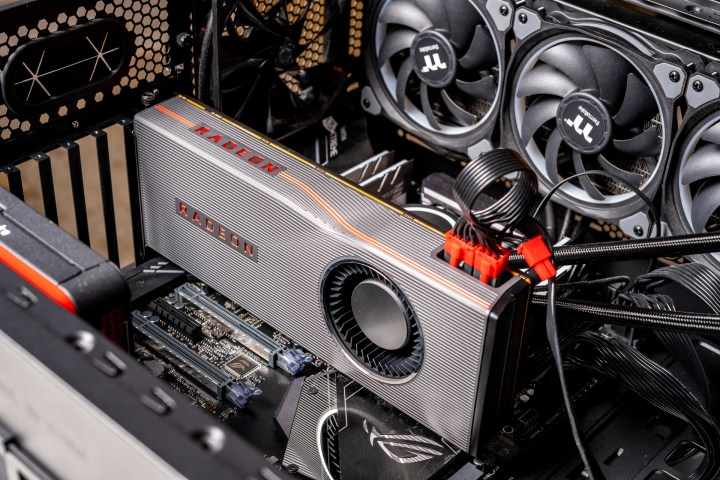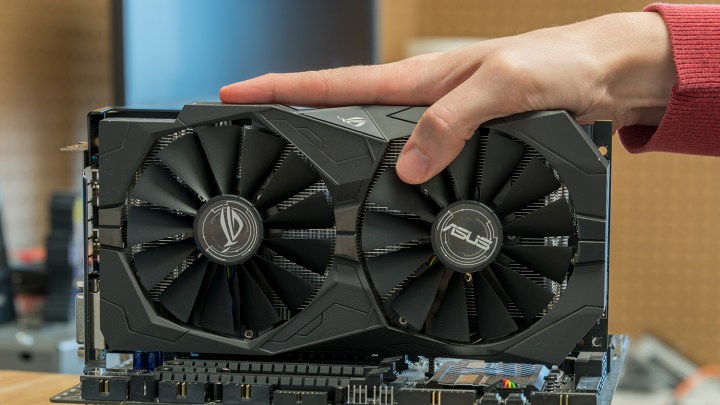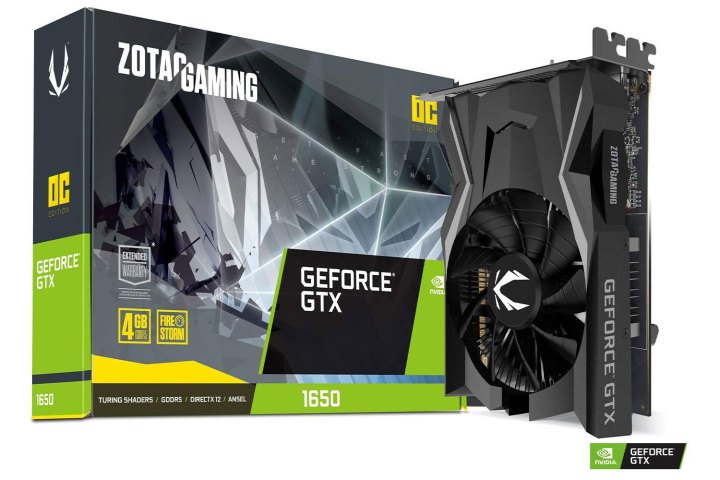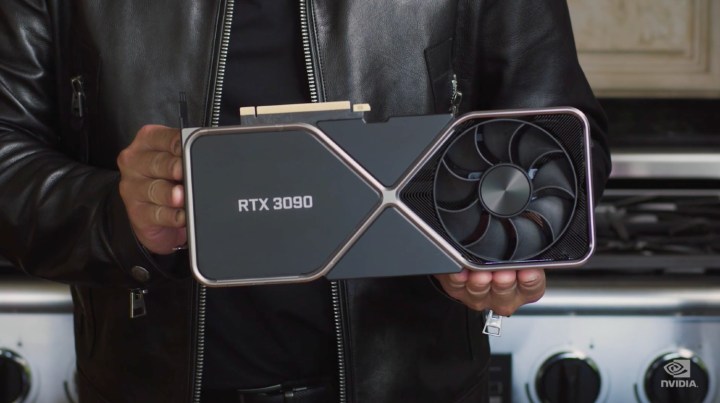Video editing is one of the most strenuous tasks a PC user can take part in. But while the main body of the work needs a powerful CPU, you can use the power of a graphics card to speed up some effects, transitions, and 3D rendering tasks. You don’t need the world’s most powerful graphics card for most tasks, but a decent gaming graphics card can go a long way to improving your video editing experience.
These are the best graphics cards for video editing, no matter your budget or needs.
Note: The following are the best all-around graphics processing units (GPUs) for their specific category and should be great with most editing software. However, some video editing clients work better with certain brands of graphics cards than others. Check your chosen editing suite before buying, to make sure the right GPU for you is going to give you the best results.
Best graphics cards for video editing
- Best graphics card for video editing overall: AMD RX 5700 XT
- Best budget graphics card for video editing: AMD RX 570
- Best compact graphics card for video editing: Nvidia GTX 1650 Mini ITX
- Best high-end graphics card for video editing: Nvidia 3090
- Best professional graphics card for video editing: Nvidia Quadro RTX 4000
Best graphics card for video editing overall: AMD RX 5700 XT

Although Nvidia takes the crown when it comes to gaming GPUs, AMD is a solid choice for video editing. At most prices, AMD simply offers more video memory than similarly priced Nvidia cards. The 5700 XT comes with 8GB of GDDR6, which is more than enough for handling 4K video, and it provides some headroom for intensive video effects and transitions.
As for performance, the 5700 XT sits between the RTX 2060 Super and RTX 2070 Super, with the latter passing the 5700 XT in a handful of benchmarks. However, you can regularly find the 5700 XT under $400. In comparison, 2070 Supers are end of life and tend to be far more expensive in their dwindling numbers.
If you’re more interested in Nvidia, the RTX 3080 is a great alternative around the price of the 2070 Super, which much greater performance. The upcoming RTX 3070 is slightly more expensive than the 5700 XT at $500, though with Nvidia’s new Ampere architecture, that extra money is being put to good use.
Although we recommend the 5700 XT, that should change soon. AMD is set to unveil its RX 6000 GPUs on October 28, dubbed “Big Navi.”
Best budget graphics card for video editing: AMD RX 570

AMD’s Polaris graphics cards are long in the tooth in 2020, but still represent fantastic value for money, as prices just keep on falling. Now easily out-performed by the RX 5000-series, these cards are cheaper than ever, and that makes the RX 570, with its 8GB of memory, a fantastic entry-level video editing card. It has more than enough power for almost all video editing needs, and at around $150 for the 8GB version ($130 for the 4GB alternative, which is less recommendable), it’s a great buy.
You’ll certainly get more performance out of our top choice, but for around $200 less, the RX 570 gets surprisingly close. But if budget really matters, the RX 570 is an excellent choice. It’s noticeably more powerful than Nvidia’s GTX 1650, despite being cheaper, but it may not be around forever. As stock clears and AMD moves over to its RDNA 2 architecture, these cards may start to sell out. Get one while you can.
Best compact graphics card for video editing: Nvidia GTX 1650 Mini ITX

Compact PCs are fun for gaming in smaller physical spaces, but with less need to show off your components at LAN parties, video editing machines can be built to even smaller sizes. The Nvidia GTX 1650 Mini ITX is a great choice there. It may only sport 4GB of memory, but it doesn’t need any external power cables, is less than 6 inches long, and should be very quiet due to its low thermal and power demands.
This card is more expensive than our budget option and won’t perform as well, but it is absolutely tiny and would fit perfectly in mini-ITX PCs or other ultra-compact builds. Although it falls behind some of its contemporaries on performance, that doesn’t mean this card isn’t capable. If it was cheaper than our budget option, we’d have picked it for that too. It will be more than capable of accelerating basic special effects and 3D transition work, and in a tiny shape and size too.
Best high-end graphics card for video editing: Nvidia RTX 3090

Nvidia used to bridge the gap between its consumer and professional cards with the Titan series, and last-gen’s Titan RTX was our go-to high-end recommendation. The Titan range is a thing of the past now, and the new RTX 3090 offers Titan-like performance at a fraction of the price. Even at $1,500, the 3090 soars above the Titan RTX with 24GB of GDDR6X memory and over 10,000 CUDA cores. The Titan RTX, at $2,500, offers 24GB of last-gen memory and a mere 4,608 CUDA cores.
The RTX 3090 puts the similarly priced RTX 2080 Ti in its place, too, beating it on the spec sheet and in real-world use. The RTX 3090 is the best of the best right now when it comes to consumer graphics cards. However, it’s still $1,500. If you’re on a budget and interested in video editing, it’s better to funnel a good chunk of that money into a better CPU (our best processor guide will help you there). With such high performance, the RTX 3090 is overkill for basic video editing, even at 4K. For any 3D work or animation, though, it shines.
The big problem is finding one. Nvidia is facing stock shortages with its two new 30-series GPUs. As the more expensive of the two currently on the market, you’re more likely to find a 3090 than you are a 3080. Still, we probably won’t see enough stock in retailers until Spring 2021.
If you favor AMD, there really isn’t an option on the level of the 3090. The Radeon VII is close in some aspects, though you probably won’t find one in stock anywhere. If team red is for you, we recommend waiting until AMD reveals its RX 6000 GPUs.
Best professional graphics card for video editing: Nvidia Quadro RTX 6000

At first glance, the Quadro RTX 6000 might not seem as good a value as a card like the RTX 3090. But for users that focus on video editing or CAD, it’s a sure winner. With 4,608 CUDA cores and 24GB of GDDR6 memory, you might feel like it’s overpriced at $4,000, but this isn’t a card designed for gaming. It’s for a host of professional applications that require frame-by-frame perfection.
Quadro has excellent applications, including CAD. It gives you high-quality designs and 3D renders. In this application, a gaming card that focuses on processing multiple frames at once has lesser value. For these applications, gaming cards won’t come close.
Through thorough testing, Nvidia found that Quadro works best for professionals. The RTX6000 is the more expensive option but ideal for graphic designers. Quadro also offers cheaper options to fit your budget. The Quadro RTX 4000 is priced below $1,000.
Many expect the Quadro RTX6000 to drop in price with Nvidia’s RTX A6000 launch.




